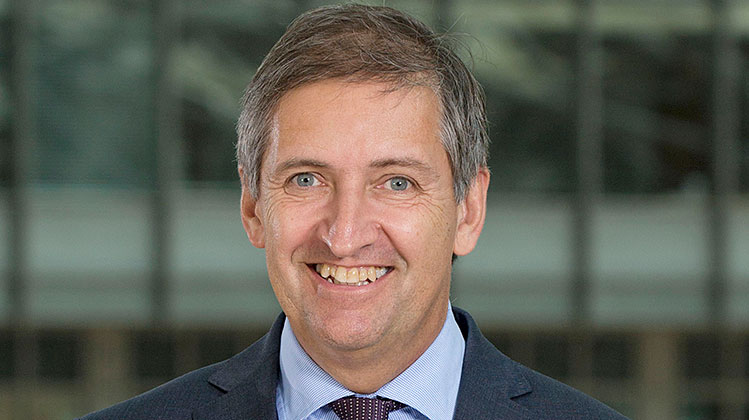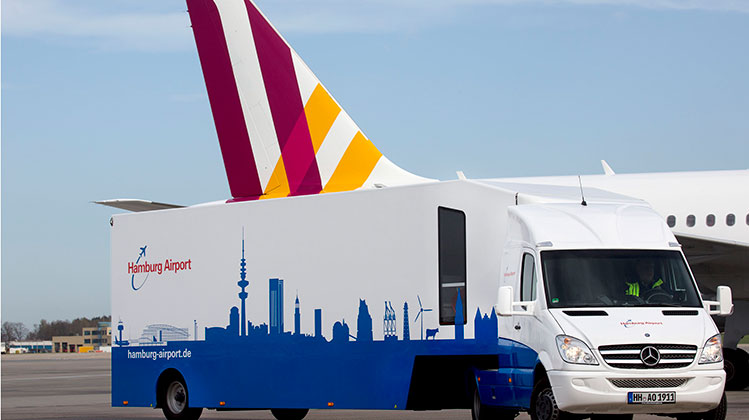Michael Eggenschwiler, CEO Hamburg Airport, interviewed by Nick Preston.

Michael Eggenschwiler, CEO Hamburg Airport: “Hamburg has a very special responsibility towards its employees, towards the environment and, above all, towards its neighbours.”
Hamburg Airport enjoyed a successful 2017 with annual passenger numbers up 8.6% to 17.6 million. It is planning for the future with its gaze firmly fixed on a responsible, sustainable path to growth. “As an inner-urban airport, Hamburg has a very special responsibility towards its employees, towards the environment and, above all, towards its neighbours,” says Michael Eggenschwiler, CEO Hamburg Airport.
The airport believes that dedicated efforts to protect the environment, along with open and honest dialogue, are essential for mutual success. There are a number of long-term initiatives and efforts underway at Hamburg Airport, which are dedicated to the environment. It achieved a global first in 1999, becoming the first airport to be awarded double EU Eco-Management and Audit Scheme (EMAS) and ISO14.001 certification, with both certifications being maintained without interruption ever since.
Mobility Concept 2020 aims for 50% of all Hamburg Airport vehicles to operate on alternative, low-emission power by 2020. Last year 44% of vehicles met this target. Since 2013 all of the airport’s newly-acquired vehicles use alternative power. It has also made charging stations available for electric cars and offers free parking for users of electric vehicles.
Hamburg has also been proactive in terms of its responsibility for noise protection programmes. Voluntary efforts have been running for more than 20 years and over that timeframe Hamburg has invested more than €40 million towards noise-proof windows and low-noise ventilation systems for local residents. Its Noise Protection Programme 8+ will incorporate even larger areas in future measures and the airport has already allocated €150,000 for noise protection in 2018. Hamburg is the first airport in Germany to implement new noise protection standards.
Other environmental efforts include Hamburg’s commitment to carbon management. In 2014 the airport achieved Level 3 Optimisation of ACI’s Airport Carbon Accreditation, the second-highest available, for its measures to identify and reduce CO₂ emissions. Compared to 2009, Hamburg now produces 50% less scope 1 and 2 emissions, which equates to 18,700 less tonnes of CO₂. Since 2005, 100% of the electricity purchased by the airport has come from climate-neutral generation. Around 70% of the heat and electricity required by the airport is generated using its own natural-gas-powered, block-type thermal power station and the central heating plant.
Hamburg promotes the use of public transport by employees, with graduated supplements for public transport tickets. Travelling to work by bike is also encouraged, with more than 400 bike rack spaces and an air pumping station for tyres available, as well as free bike checks with an on-site repair service twice a year.

The Hamburg Airport Info-Mobil is a dedicated and customised truck containing information and material to maintain a presence in the community, and at events and markets.
Investing in the local community
Hamburg Airport is actively involved in social projects in the local region. It is also active in various initiatives to implement projects and exchange know-how with partners. In 2017, the Hamburg Airport Community Prize was introduced. This is open to non-profit clubs, associations and organisations from Hamburg and the surrounding area. The total prize money available was €10,000 in 2017 and will rise to €12,000 in 2018. Last year there were 40 participants, with the winners determined via online voting.
Hamburg Airport factbox
2017: 17.6 million passengers
2017 passenger traffic growth: 8.6%
Key airline customers: Eurowings, Lufthansa, Ryanair, Condor, easyJet
Number of routes: 133
Top 5 destinations: Munich, Frankfurt, London, Palma de Mallorca, Zurich
This year marks the 20th anniversary of Hamburg Airport’s community newspaper called ‘Hamburg Flughafen’. There are four issues a year and the newspaper contains information for neighbours and interested members of the public. This might include information about what is happening on the airport site, events and activities being planned, as well as advance notice of restrictions.
The airport has a dedicated department for neighbourhood and community work, which includes an ‘Info-Mobil’. This is a dedicated and customised truck in airport livery containing information and material to maintain a presence in the community, and at events and markets.
Looking ahead
A total investment of €540 million will be made at Hamburg over the next 10 years for the step by step optimisation of the terminals and aprons. “This will mean we are well equipped for future air traffic demand and Northern Germany’s ever-growing need for mobility,” explains Eggenschwiler.
Among the infrastructure improvements underway or in the planning, phase five of a comprehensive refurbishment of the main apron commenced in February, and this marked the halfway stage of a €120 million project which is scheduled for completion in 2020. In 2019 the construction of the new Southern Passenger Pier will begin. This will include six air bridges and involves an investment of €160 million.
Hamburg has also seen developments in its route network with eight new routes launching during the summer season. “We have deliberately planned conservatively for 2018, because the airlines are still on a consolidation path,” says Eggenschwiler. “We expect passenger figures to remain stable at a high level, and a tendency toward fewer aircraft movements. Eight completely new routes have launched this summer, so that one thing remains constant for our passengers: a broad range from which to choose. Passengers will continue to have the choice between numerous airlines with different service levels and a large route network.”







